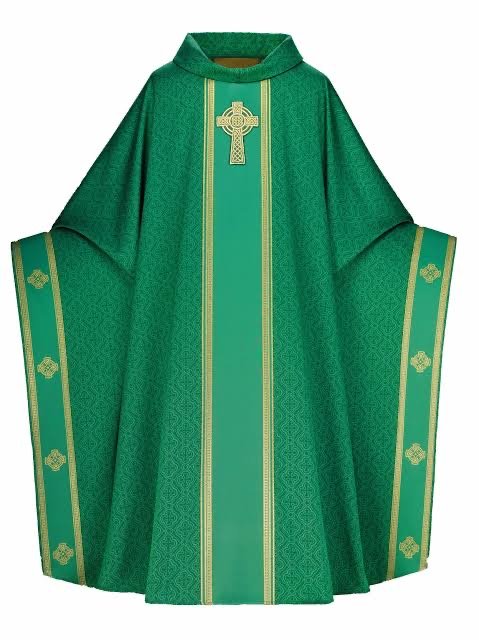This post was written and edited by Ibi Emmannuel
INTRODUCTION
When we think of liturgical seasons we typically think of the major seasons of Advent, Christmas, Lent, and Easter. These seasons celebrate what could be thought of as “The Main Event.” Namely, the incarnation, birth, passion, death, resurrection, and ascension of Jesus. What then is Ordinary time?
WHAT IS THE SEASON OF ORDINARY TIME?
Ordinary Time encompasses that part of the year that does not fall within the seasons of Advent, Christmas, Lent or Easter. The Catholic Church celebrates two periods of Ordinary Time. The first period, Ordinary Time I, begins after the Feast of the Baptism of the Lord and ends the Tuesday evening before Ash Wednesday. Ordinary Time II runs from the Monday after Pentecost until Evening Prayer is said the night before Advent begins.
WHY IS IT CALLED “ORDINARY” TIME?
The word “ordinary” usually refers to something that is common or not exciting. So if Ordinary Time is such an important part of the liturgical year, why does it sound so trivial?
In the religious context, “ordinary” comes from the latin word ordinalis, which refers to an ordered sequence. Numbering the weeks in Ordinary Time (The First Sunday in Ordinary Time, The Second Sunday in Ordinary Time, etc.) helps us keep track of where we are in the liturgical year.
Ordinalis stems from the Latin word ordo, from which we get the English word order. So the numbered weeks in Ordinary Time are actually part of the ordered—or rhythmic—life of the Church. Just as in our everyday lives, the Church has times of the year for celebrating and feasting (Christmas, Easter, and holy days), penance (Advent and Lent), and quiet growth and joyful expectation (Ordinary Time).
Without the periods of growth and maturation, the special occasions throughout the year lose their meaning because we don’t get a full glimpse of Jesus’ life.
WHAT IS THE SIGNIFICANCE OF THIS LITURGICAL SEASON?
Christmas Time and Easter Time highlight the central mysteries of the Paschal Mystery, namely, the incarnation, death on the cross, resurrection, and ascension of Jesus Christ, and the descent of the Holy Spirit at Pentecost. The Sundays and weeks of Ordinary Time, on the other hand, take us through the life of Christ. This is the time of conversion. This is living the life of Christ.
During Ordinary Time, the Church’s prayers and selections of readings from the Sacred Scriptures help believers accompany the Lord Jesus in his public ministry. The Church selects healings, signs, and essential teachings from the life of Jesus Christ so that followers can be reminded, reaffirmed, consoled, and challenged in how they are living the Christian way of life.
Through Ordinary Time, the community of disciples are once again told by the Lord to forgive, accept others generously, be healed and serve as instruments of healing, seek peace, live humbly, pray and trust in his care for them. Ordinary Time invites us to contemplate the parts of Jesus’ life that were ordinary, much like our own lives, and inspires us to see the Father, the Son and the Holy Spirit in the most ordinary events and everyday activities of our lives. When we are able to see God in the most mundane aspects of our lives we realize that nothing is in fact ordinary!
The Sundays and weeks of Ordinary Time take us through the life of Christ. This is the time of conversion. This is living the life of Christ.
WHY DO WE USE GREEN DURING THIS SEASON?
Green is the liturgical color for Ordinary Time. That’s why, when it’s not a special feast day, priests’ vestments, altar cloths, and church decorations are green.
Green is the color of life and hope. In the Church, green has long been associated with the time of growth and expansion of the Church after Pentecost when the disciples, filled with the Holy Spirit, began to spread the Gospel.
This is a great reminder that we, too, are called to share the Good News everywhere we go.
CONCLUSION
Ordinary Time is a time for growth and maturation, a time in which the mystery of Christ is called to penetrate ever more deeply into history until all things are finally caught up in Christ. The goal, toward which all of history is directed, is represented by the final Sunday in Ordinary Time, the Solemnity of Our Lord Jesus Christ, King of the Universe. As with all seasons in the liturgical year, Ordinary Time is an opportunity to deepen your relationship with Jesus, grow spiritually, and participate in the life of the Church.
THANK YOU FOR READING, GOD BLESS US ALL
source
